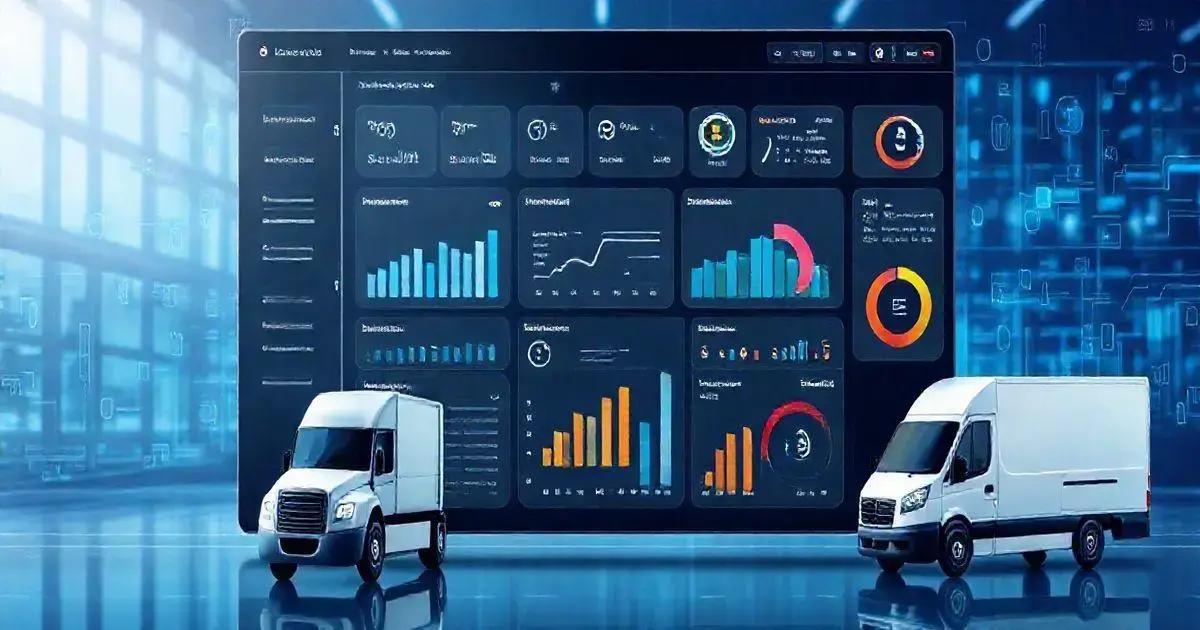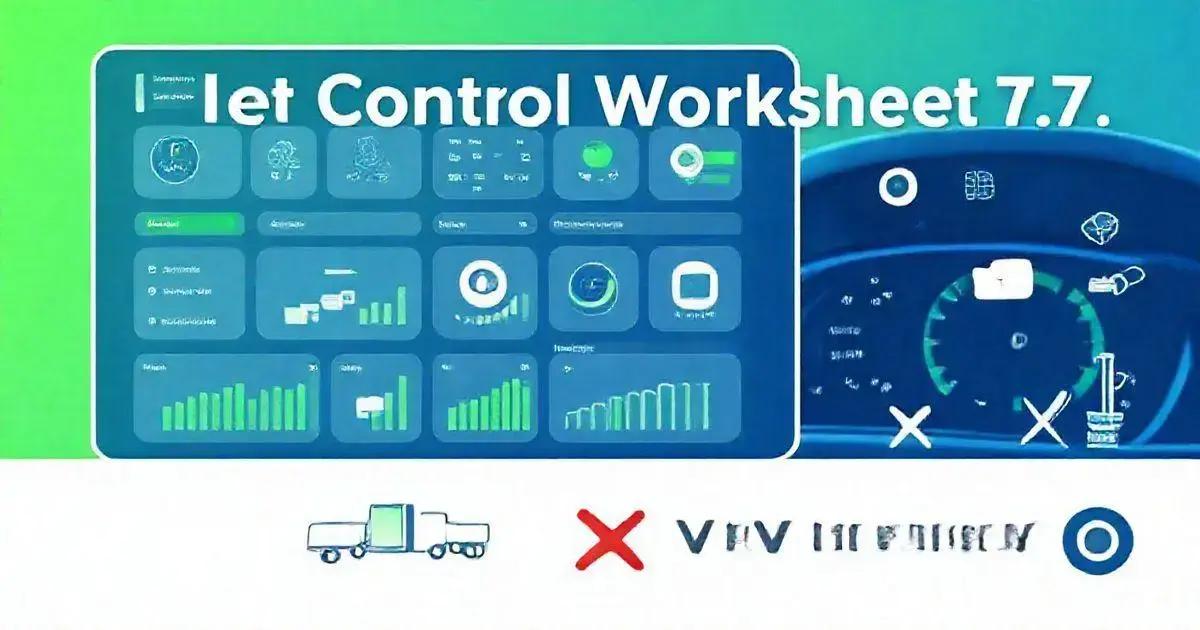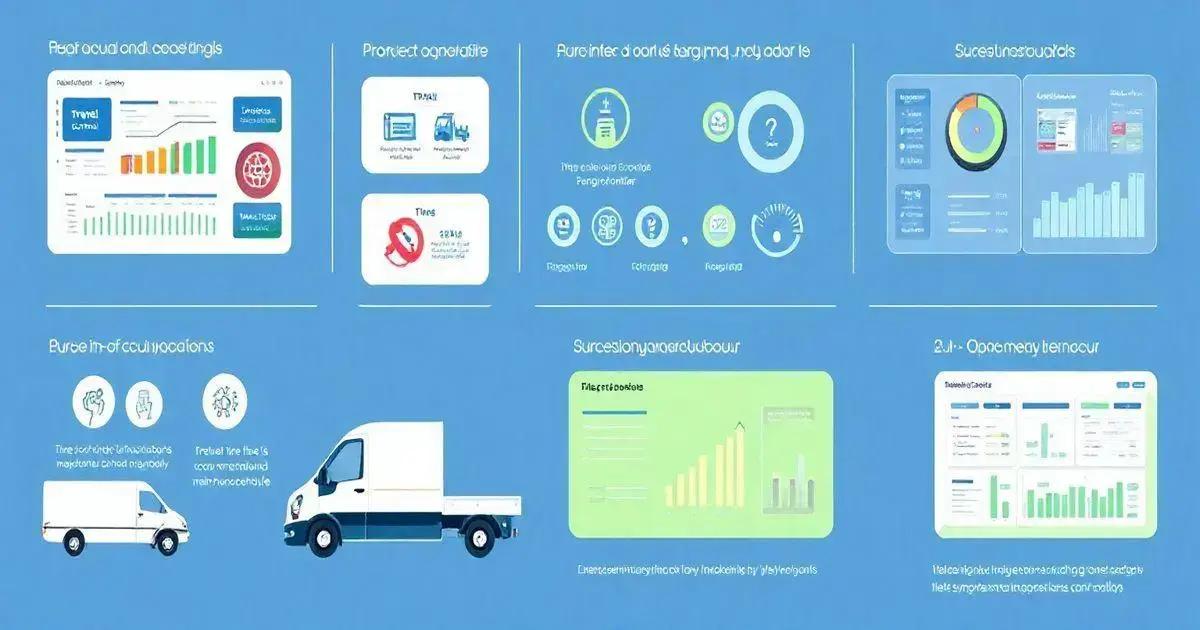5 Essential Features of Fleet Control Worksheet 7.0 You Must Know Leave a comment
The Fleet Control Worksheet 7.0 is an advanced tool for fleet management, offering features like an intuitive dashboard for tracking fuel consumption, maintenance costs, and vehicle performance, along with functionalities for vehicle maintenance tracking and cost analysis, enabling fleet managers to optimize operations and reduce expenses.
Are you tired of juggling spreadsheets to track your fleet’s performance? The Fleet Control Worksheet 7.0 is here to simplify your life. It combines all the essential tools you need for effective vehicle management, from travel and cargo control to tire management and maintenance tracking.
This worksheet is designed for businesses looking to streamline their fleet operations, ensuring you have the right information at your fingertips.
Key Features Overview
The Fleet Control Worksheet 7.0 is a powerful tool packed with features that help you manage your fleet efficiently. Here are some of the standout functionalities:
Key Features Overview
- Initial Dashboards: The worksheet comes with comprehensive dashboards that provide a quick overview of crucial metrics such as kilometers driven by each driver, average consumption per vehicle, and total maintenance costs. This allows fleet managers to make informed decisions at a glance.
- Travel Control: Keep track of all trips taken by your vehicles. Record cargo details, driver assignments, and all travel expenses in one place, making it easier to analyze performance and optimize routes.
- Tire Management: The worksheet includes a dedicated section for tire control, where you can monitor tire changes by kilometers driven, schedule replacements, and track the status of each tire. This helps in maintaining vehicle safety and performance.
- Maintenance Tracking: With options for both preventive and corrective maintenance, you can easily log service history for each vehicle. Set reminders for upcoming maintenance tasks to prevent costly breakdowns.
- Cost Analysis: The worksheet allows you to analyze costs related to fuel, maintenance, and other expenses, giving you a comprehensive picture of your fleet’s financial health. This feature is critical for budgeting and cost control.
Overall, the Fleet Control Worksheet 7.0 is designed to enhance fleet management, making it easier to keep track of your vehicles and their performance while ultimately saving you time and money.

How to Use the Dashboard
The dashboard in the Fleet Control Worksheet 7.0 is designed to provide a user-friendly interface for monitoring and managing your fleet’s performance. Here’s a step-by-step guide on how to effectively utilize the dashboard:
How to Use the Dashboard
- Accessing the Dashboard: Open the Fleet Control Worksheet and navigate to the dashboard tab. You’ll be greeted with visual summaries of your fleet’s performance metrics.
- Understanding Key Metrics: Familiarize yourself with the different metrics displayed, such as total kilometers driven, average fuel consumption, and maintenance costs. Each box on the dashboard represents vital information that helps assess your fleet’s efficiency.
- Customizing Views: Depending on your needs, you can customize which metrics to display. Simply use the settings option in the dashboard to select or deselect various data points that are relevant to you.
- Inputting Data: Ensure that you regularly update the worksheet with your fleet data. Input information such as kilometers driven, fuel purchases, and maintenance logs. The dashboard will automatically refresh to reflect the latest data you enter.
- Setting Alerts: Utilize the alert features available in the dashboard to set reminders for maintenance schedules and inspections. This proactive approach helps prevent unexpected vehicle downtime.
- Analyzing Trends: Regularly review the data presented in the dashboard to identify trends over time. Look for patterns in fuel consumption or maintenance costs which can inform your decision-making and strategy adjustments.
By following these steps, you can make the most out of the Fleet Control Worksheet 7.0’s dashboard, ensuring efficient management of your fleet and better oversight on operational performance.
Vehicle Maintenance Tracking
Keeping a close eye on vehicle maintenance is crucial for maximizing the lifespan and performance of your fleet. The Fleet Control Worksheet 7.0 provides a robust vehicle maintenance tracking feature to ensure that all your maintenance activities are organized and easily accessible. Here’s how to effectively track maintenance:
Vehicle Maintenance Tracking
- Logging Maintenance Activities: Each time a vehicle undergoes maintenance, be sure to log the details in the designated section of the worksheet. This should include the type of maintenance (preventive or corrective), the date performed, the service provider, and the costs incurred.
- Setting Maintenance Schedules: The worksheet allows you to set up regular maintenance schedules based on kilometers driven or time intervals. Make sure to record the recommended maintenance intervals for each vehicle manufacturer, and set reminders to prompt action ahead of due dates.
- Tracking Maintenance Costs: One of the key benefits of the maintenance tracking feature is the ability to monitor the costs associated with vehicle upkeep. By regularly updating this info, you can analyze overall maintenance spending, which helps in budgeting and forecasting future costs.
- Analyzing Maintenance History: Use the historical data recorded in the worksheet to review past maintenance activities for each vehicle. This analysis can help identify recurring issues or trends, giving you insights into which vehicles may need replacements or more frequent servicing.
- Reporting Issues: If you notice a pattern of breakdowns or inefficiencies, document these issues directly within the maintenance tracking section. This information can be vital when discussing your fleet’s performance with management or when seeking solutions from service providers.
By leveraging the vehicle maintenance tracking capabilities of the Fleet Control Worksheet 7.0, you’ll be better equipped to manage your fleet’s maintenance needs, leading to improved reliability and reduced operating costs.

Cost Analysis and Reporting
Understanding and managing costs effectively is vital for running a successful fleet operation. The Fleet Control Worksheet 7.0 offers comprehensive features for cost analysis and reporting that allow you to keep your expenses in check. Here’s how to utilize these features:
Cost Analysis and Reporting
- Inputting Cost Data: Regularly input all relevant cost data into the worksheet, including fuel purchases, maintenance expenses, and any other operational costs associated with your fleet. The more accurate and timely your data entry, the more effective your analysis will be.
- Tracking Fuel Expenses: Use the worksheet to record fuel purchases for each vehicle. This feature provides insights into fuel consumption patterns and helps identify which vehicles are less fuel-efficient. Tracking fuel costs closely enables you to make informed decisions about route planning and vehicle efficiency upgrades.
- Analyzing Maintenance Costs: The maintenance tracking section allows you to view and analyze costs associated with vehicle upkeep. By examining these costs over time, you can identify which vehicles require more frequent repairs and potentially signal the need to replace older, less efficient units.
- Generating Reports: The Fleet Control Worksheet 7.0 enables you to generate detailed reports based on the cost data entered. Use these reports to summarize key metrics such as total fuel costs, average maintenance costs per vehicle, and overall operational expenses. This reporting can be crucial for budget discussions and financial planning.
- Identifying Cost-Saving Opportunities: By analyzing the cost reports generated, you can pinpoint areas where you might save money, such as optimizing routes to reduce fuel consumption or scheduling maintenance to avoid costly repairs. Look for trends in your spending that can inform better budgeting and expenditure strategies.
With the cost analysis and reporting features of the Fleet Control Worksheet 7.0, you’ll gain valuable insights into your fleet’s financial health, enabling you to make strategic decisions that enhance profitability and sustainability.
User-Friendly Setup Process
Getting started with the Fleet Control Worksheet 7.0 is a breeze, thanks to its user-friendly setup process. Designed to be intuitive, this worksheet allows you to get your fleet management system up and running in no time. Here’s how to set it up effectively:
User-Friendly Setup Process
- Download and Open the Worksheet: Start by downloading the Fleet Control Worksheet 7.0 from the official website. Once downloaded, open the file in Microsoft Excel. Ensure you have a compatible version of Excel (2007 or later) for optimal performance.
- Familiarize Yourself with the Layout: Take a moment to explore the different tabs and sections within the worksheet. Each section is clearly labeled, making it easy to understand where to input data, track expenses, and access reports.
- Input Your Fleet Information: Begin by entering your fleet details, including vehicle types, driver information, and other relevant data. This foundational step allows you to customize the worksheet according to your specific fleet requirements.
- Set Up Maintenance Schedules: Use the maintenance tracking section to define schedules for each vehicle. Input the recommended maintenance intervals based on manufacturer guidelines. This proactive approach helps ensure vehicle longevity and reliability.
- Customize Dashboards: Adjust the dashboard settings to display the metrics that matter most to you. Whether it’s fuel consumption, maintenance costs, or travel statistics, customizing your dashboard enhances your ability to monitor performance effectively.
- Utilize Help Resources: If you encounter any issues during setup, take advantage of the help resources available. This might include instructional videos, FAQs, and customer support options provided with the worksheet to help resolve any questions or challenges you might face.
By following these simple steps, you’ll be well on your way to harnessing the full capabilities of the Fleet Control Worksheet 7.0. Its user-friendly setup process ensures that even those with minimal Excel experience can easily manage their fleet operations efficiently.
Conclusion
In conclusion, the Fleet Control Worksheet 7.0 is an invaluable tool for managing and optimizing your fleet operations.
With its comprehensive features like vehicle maintenance tracking, cost analysis, and user-friendly setup process, this worksheet simplifies the complexities of fleet management.
By leveraging the dashboard for real-time insights, regularly updating data for accurate reporting, and utilizing the maintenance tracking system, you can ensure your fleet remains efficient and cost-effective.
Whether you manage a small fleet or a large-scale operation, the Fleet Control Worksheet 7.0 empowers you to make informed decisions that enhance productivity and reduce operational costs.
Investing time in setting up and utilizing this worksheet will pay dividends in the long run, helping you keep your fleet running smoothly while maximizing your resources.
Start optimizing your fleet management today with Fleet Control Worksheet 7.0!
FAQ – Frequently Asked Questions about Fleet Control Worksheet 7.0
What is the Fleet Control Worksheet 7.0?
The Fleet Control Worksheet 7.0 is an Excel-based tool designed to help fleet managers track vehicle performance, maintenance costs, fuel usage, and more.
How do I set up the Fleet Control Worksheet?
To set up the worksheet, download it from the official website, open it in Microsoft Excel, and begin by entering your fleet’s details such as vehicle types, driver information, and maintenance schedules.
Can I customize the dashboard in the worksheet?
Yes, the dashboard can be customized to display the metrics that are most important to you, such as fuel consumption and maintenance costs.
Is technical support available if I have issues?
Yes, technical support is available through various resources, including FAQs, instructional videos, and customer service.
What versions of Excel are compatible with this worksheet?
The Fleet Control Worksheet 7.0 works on any version of Excel from 2007 onwards.
How often should I update the data in the worksheet?
It’s recommended to update the data regularly, ideally after every fuel purchase, maintenance activity, or any other significant fleet-related transaction to ensure accurate tracking and reporting.

